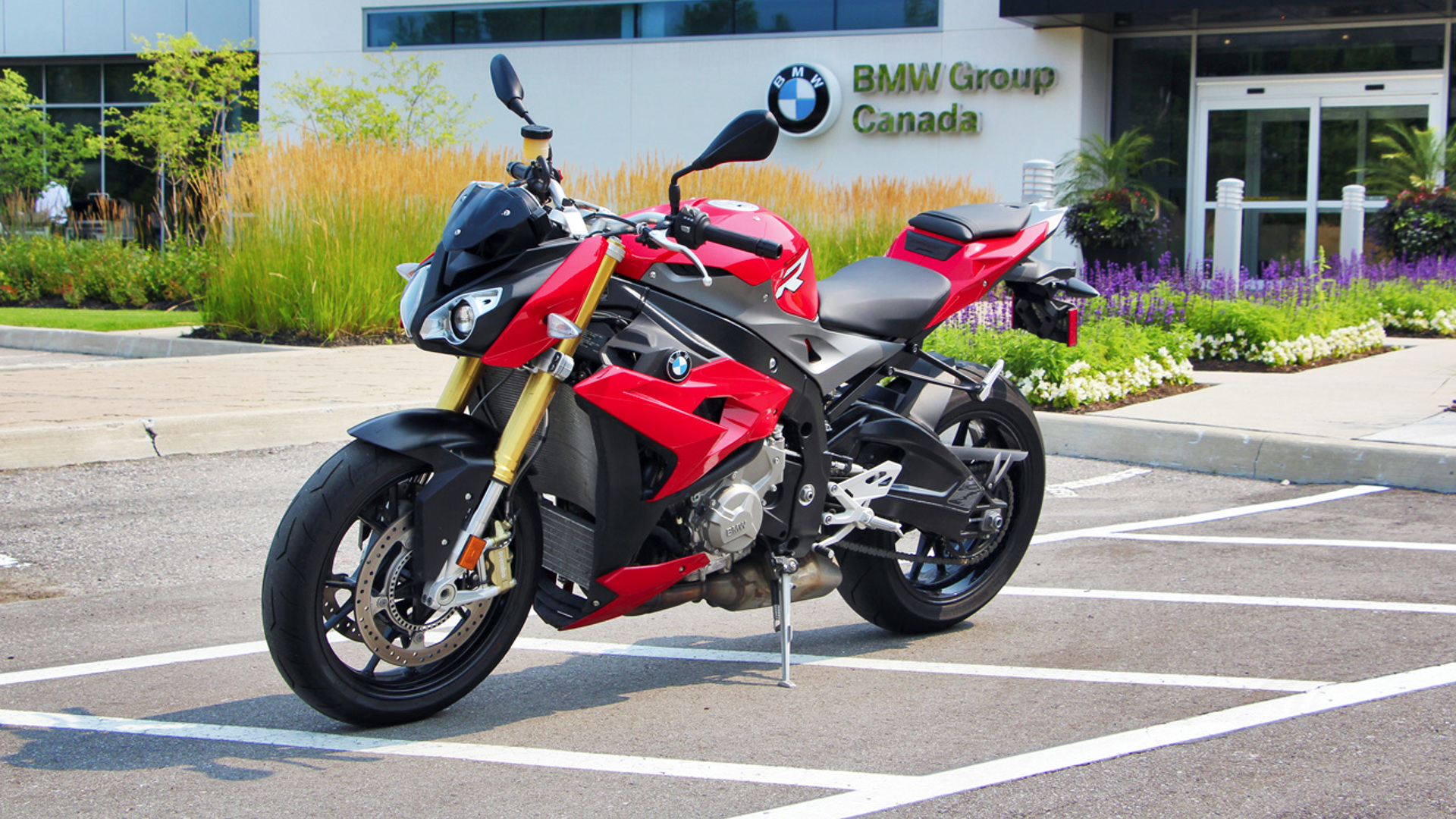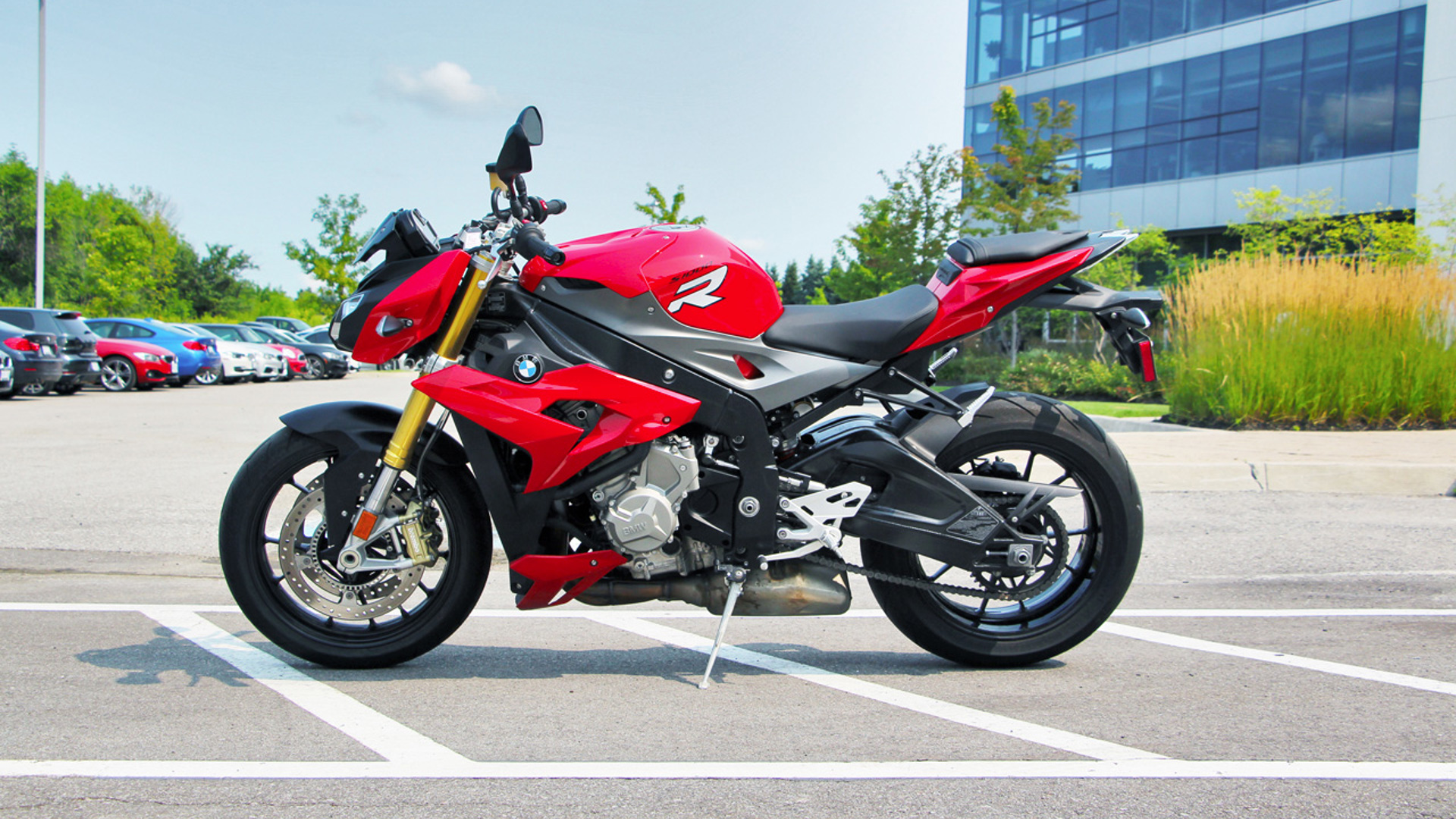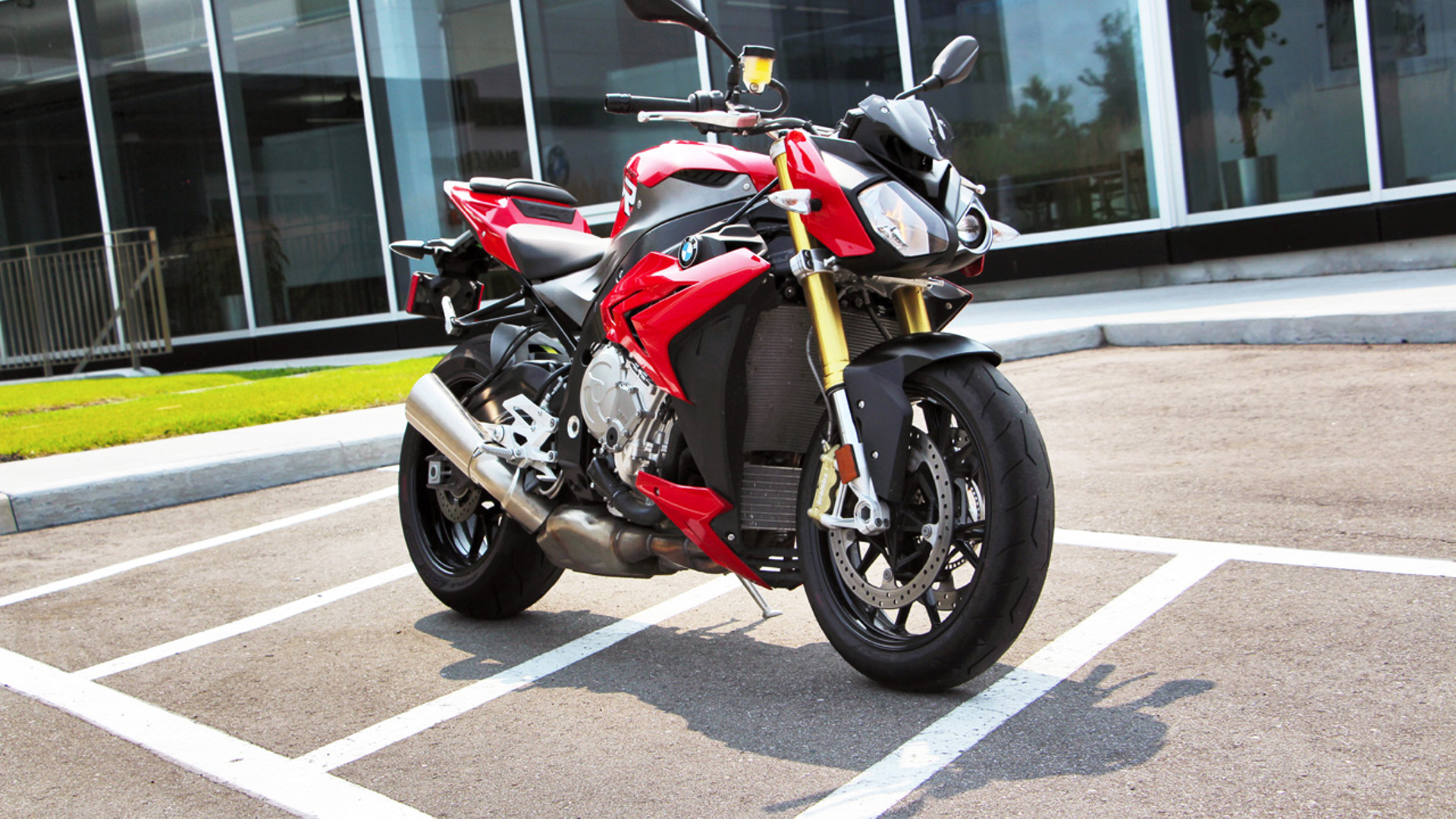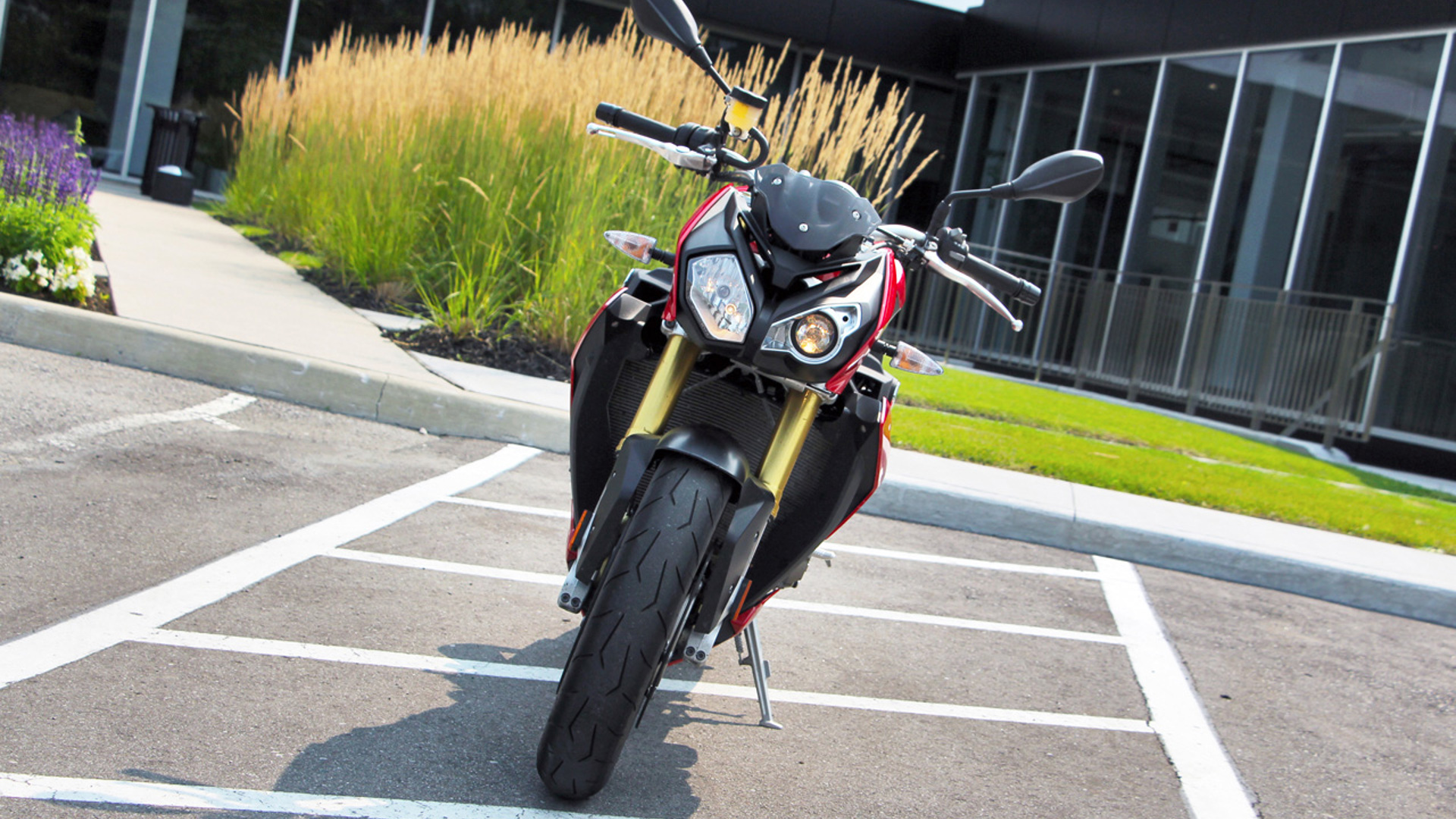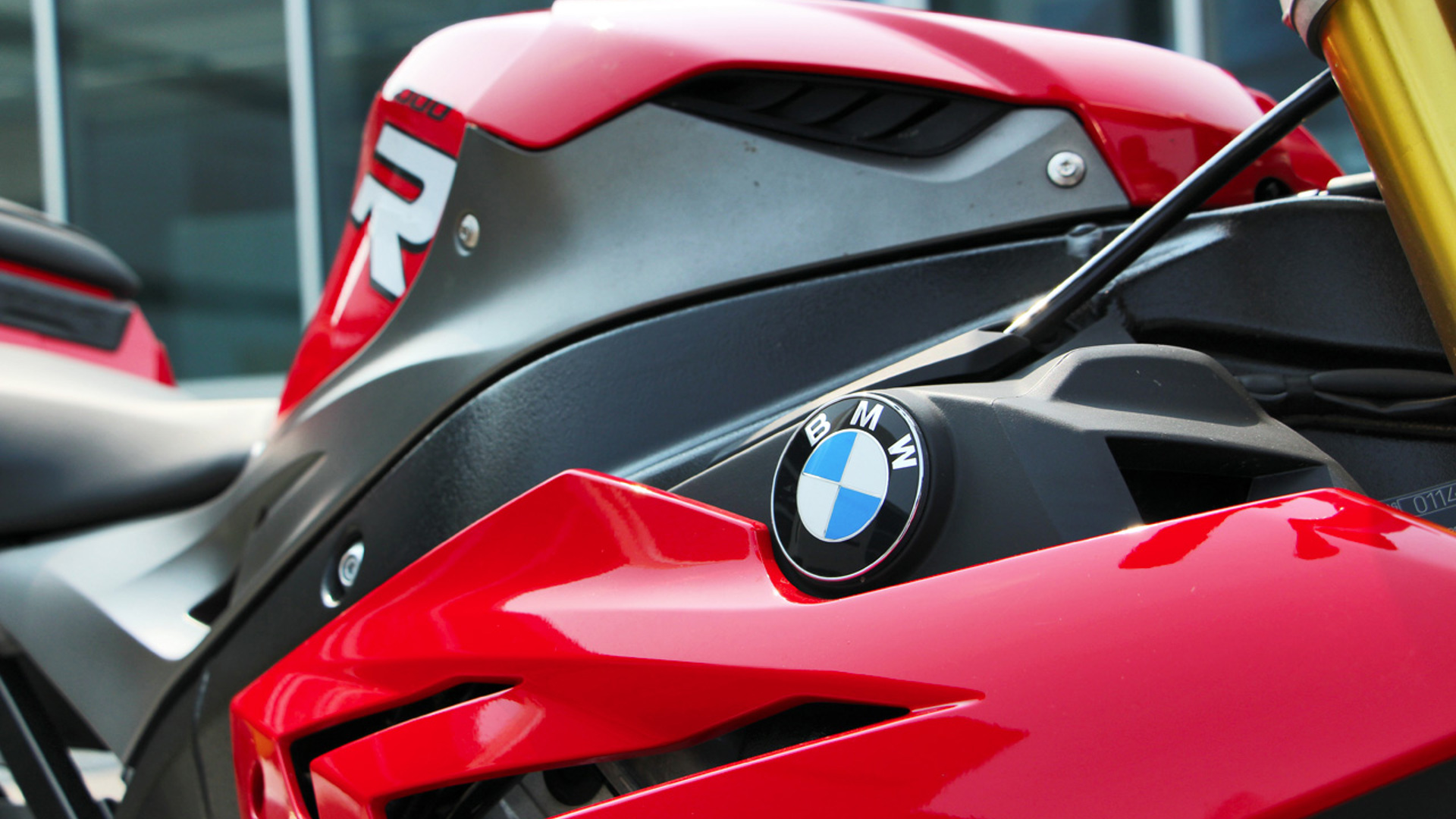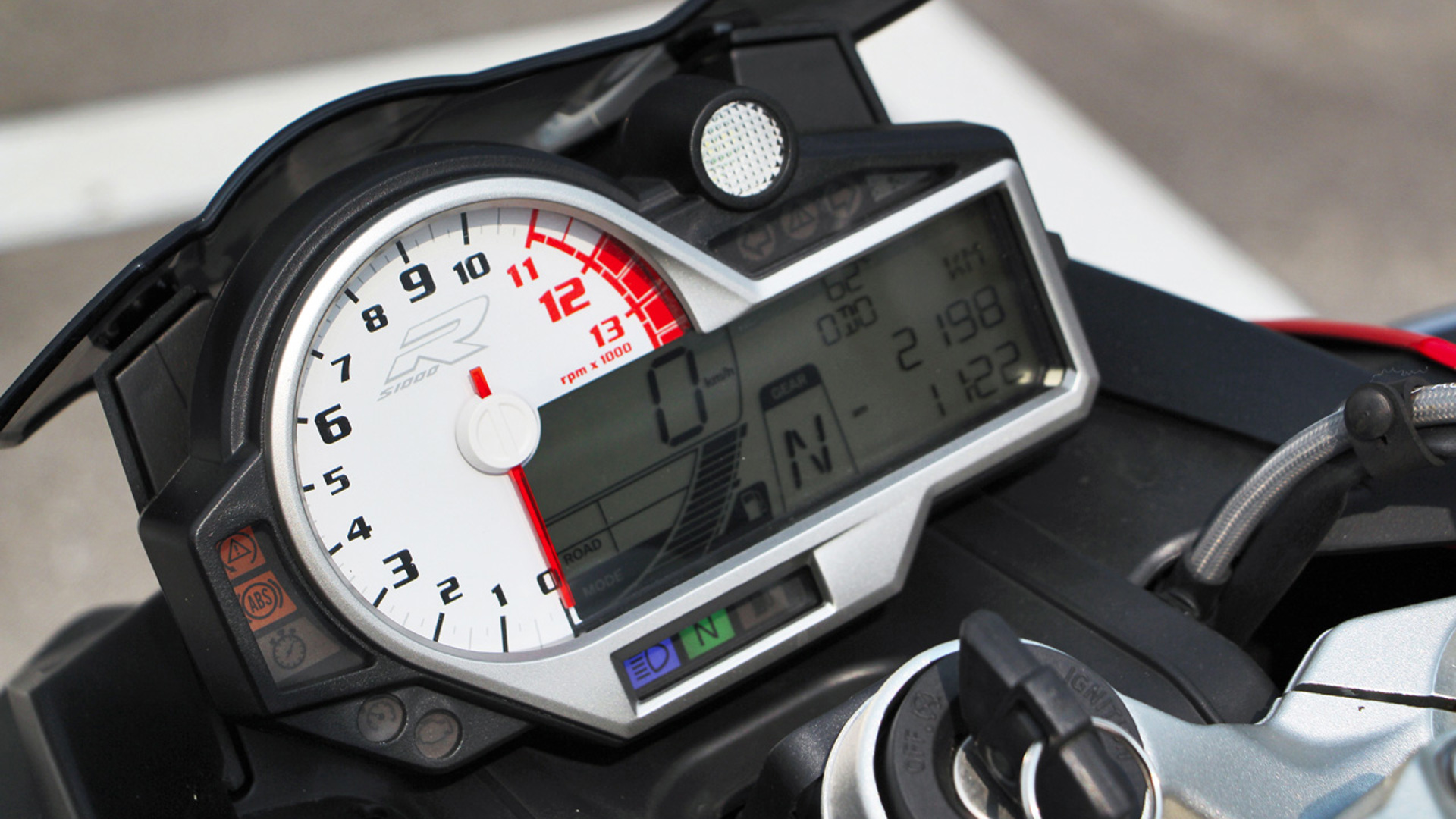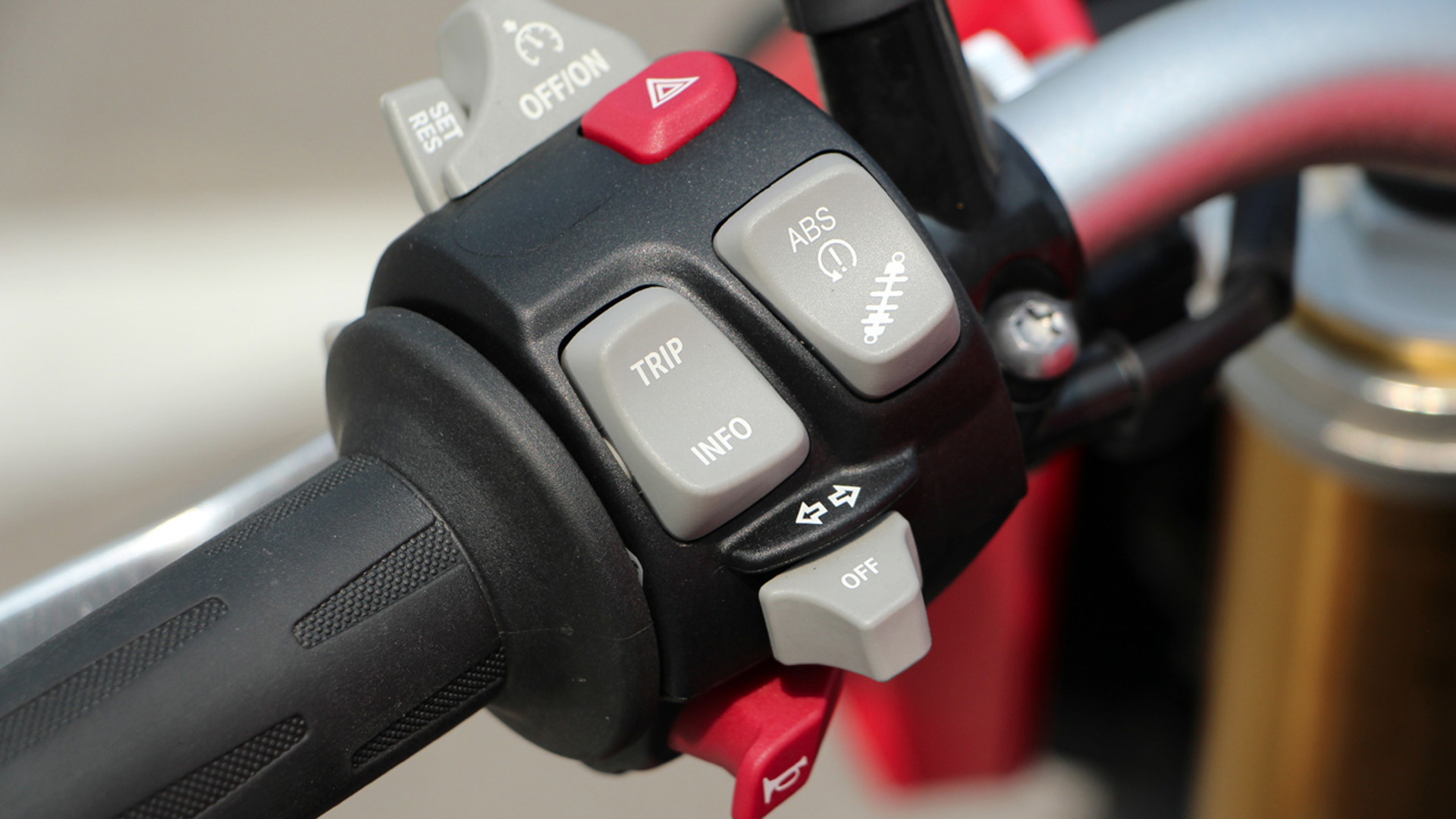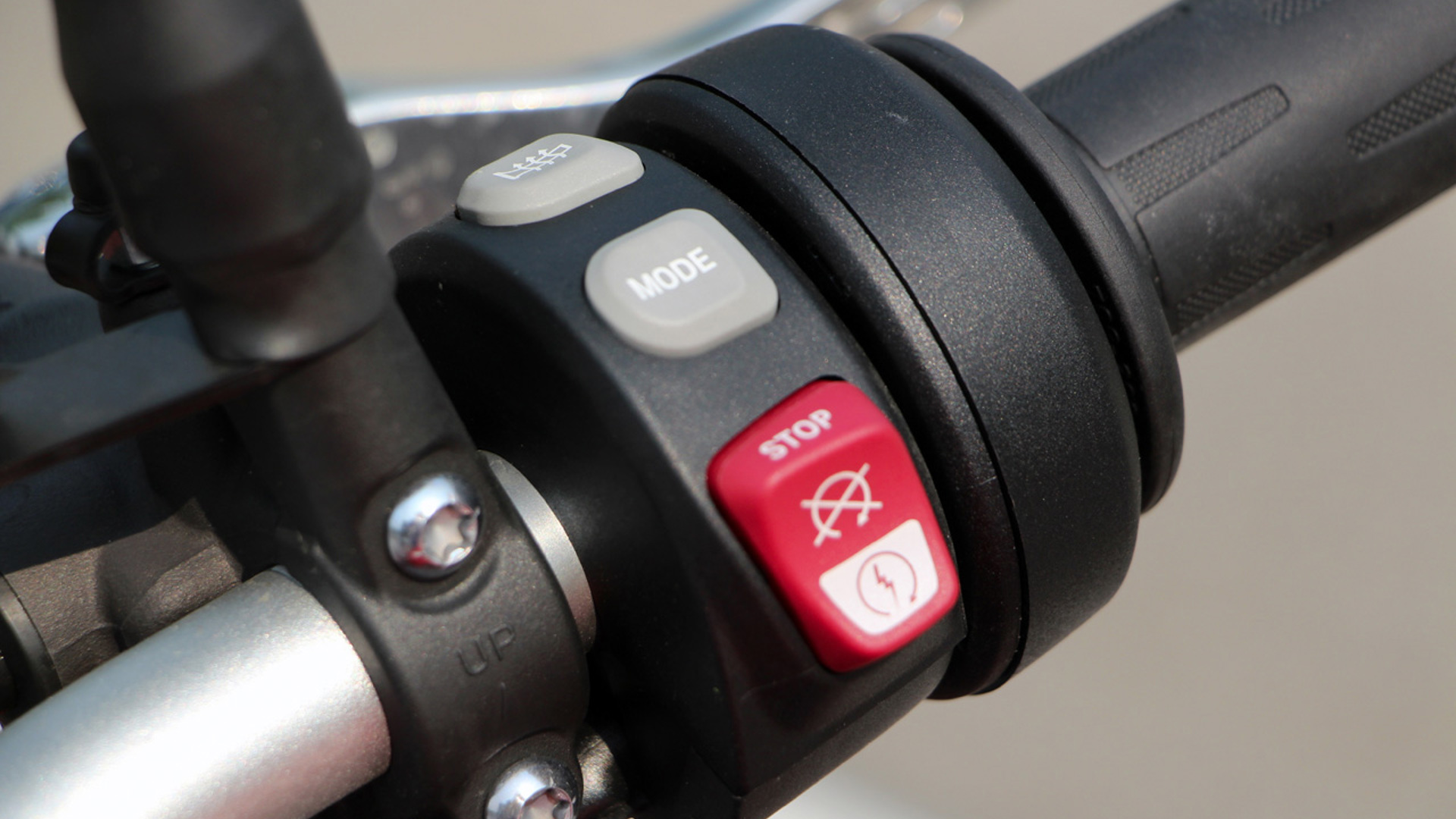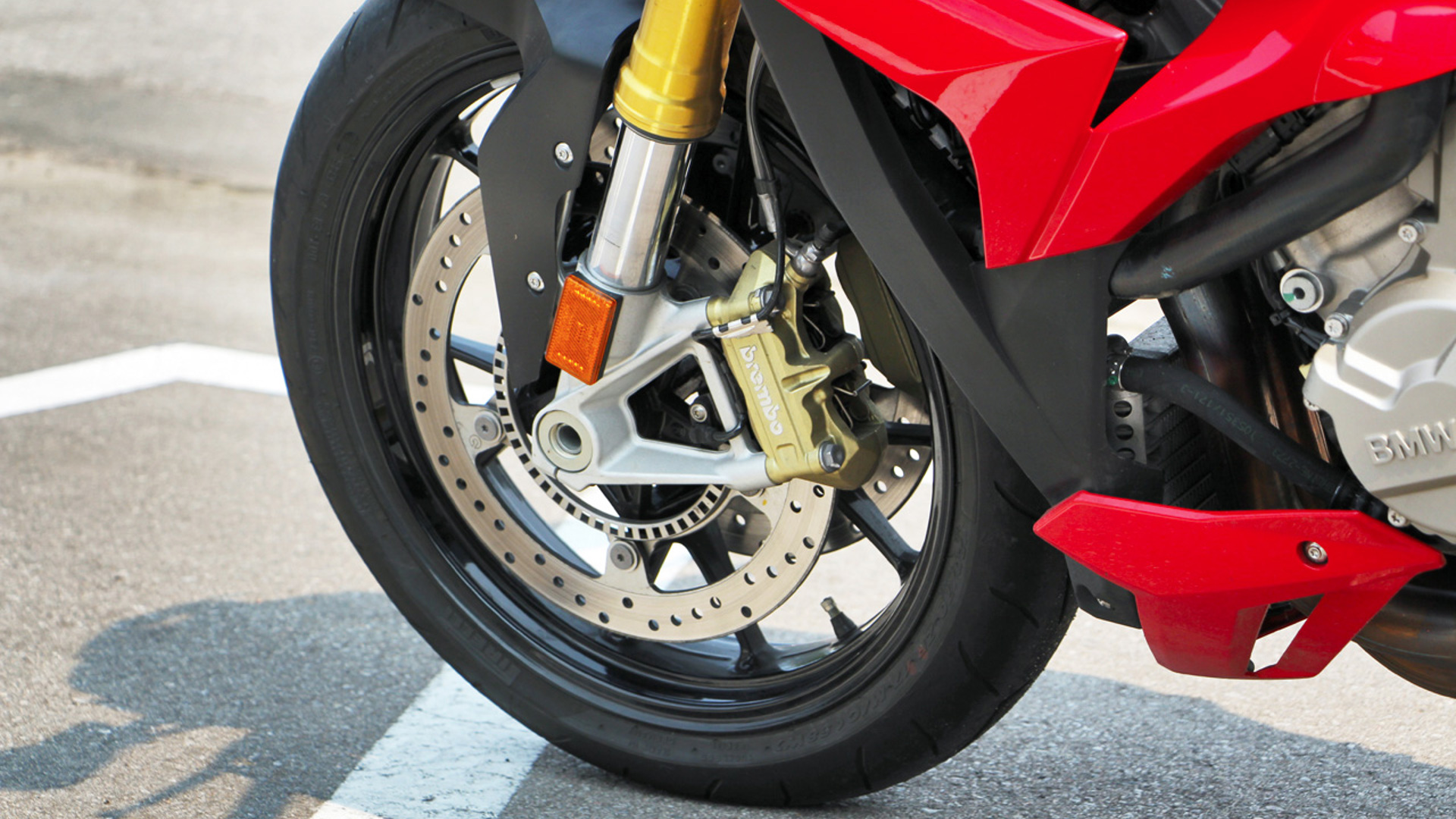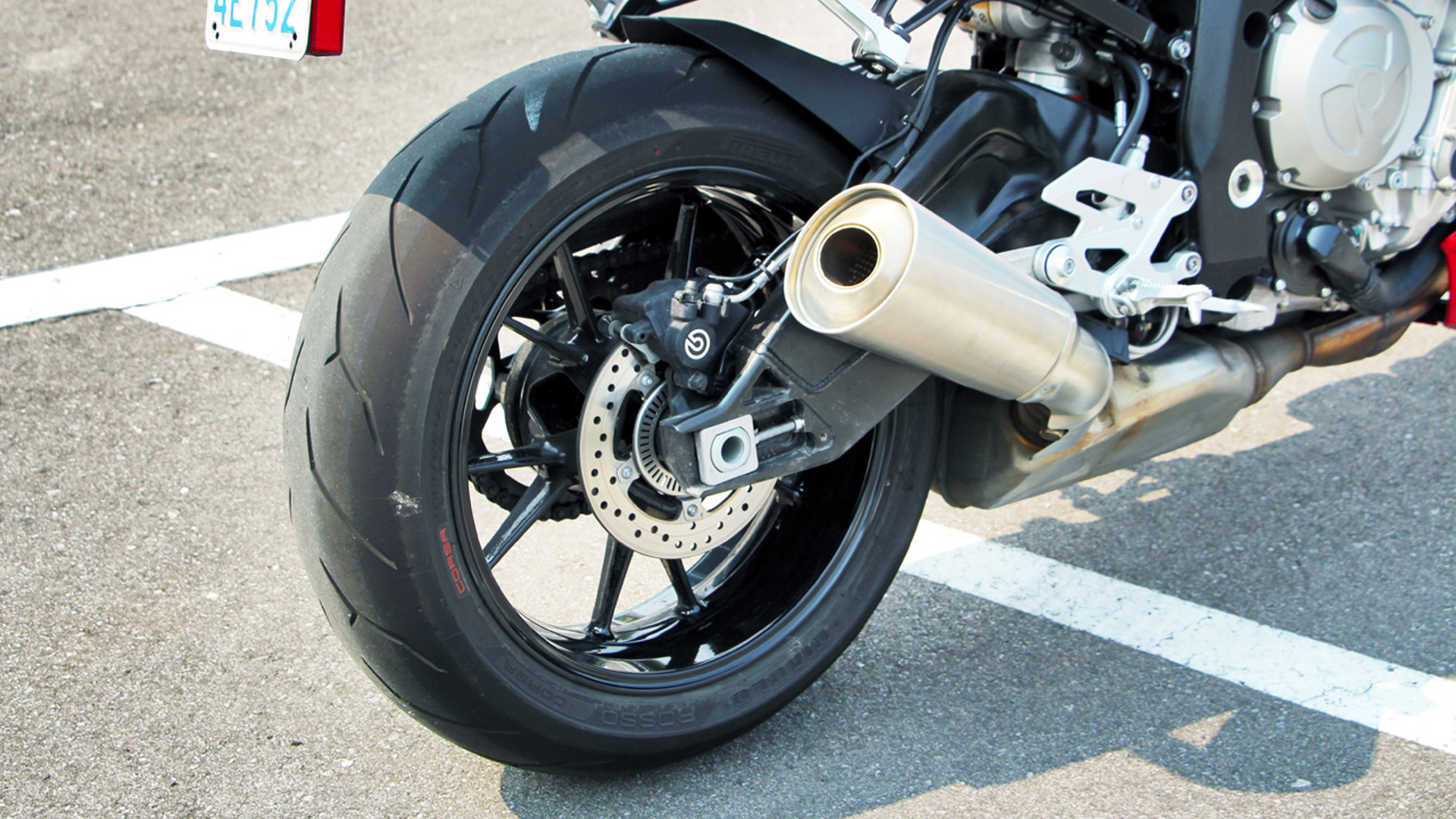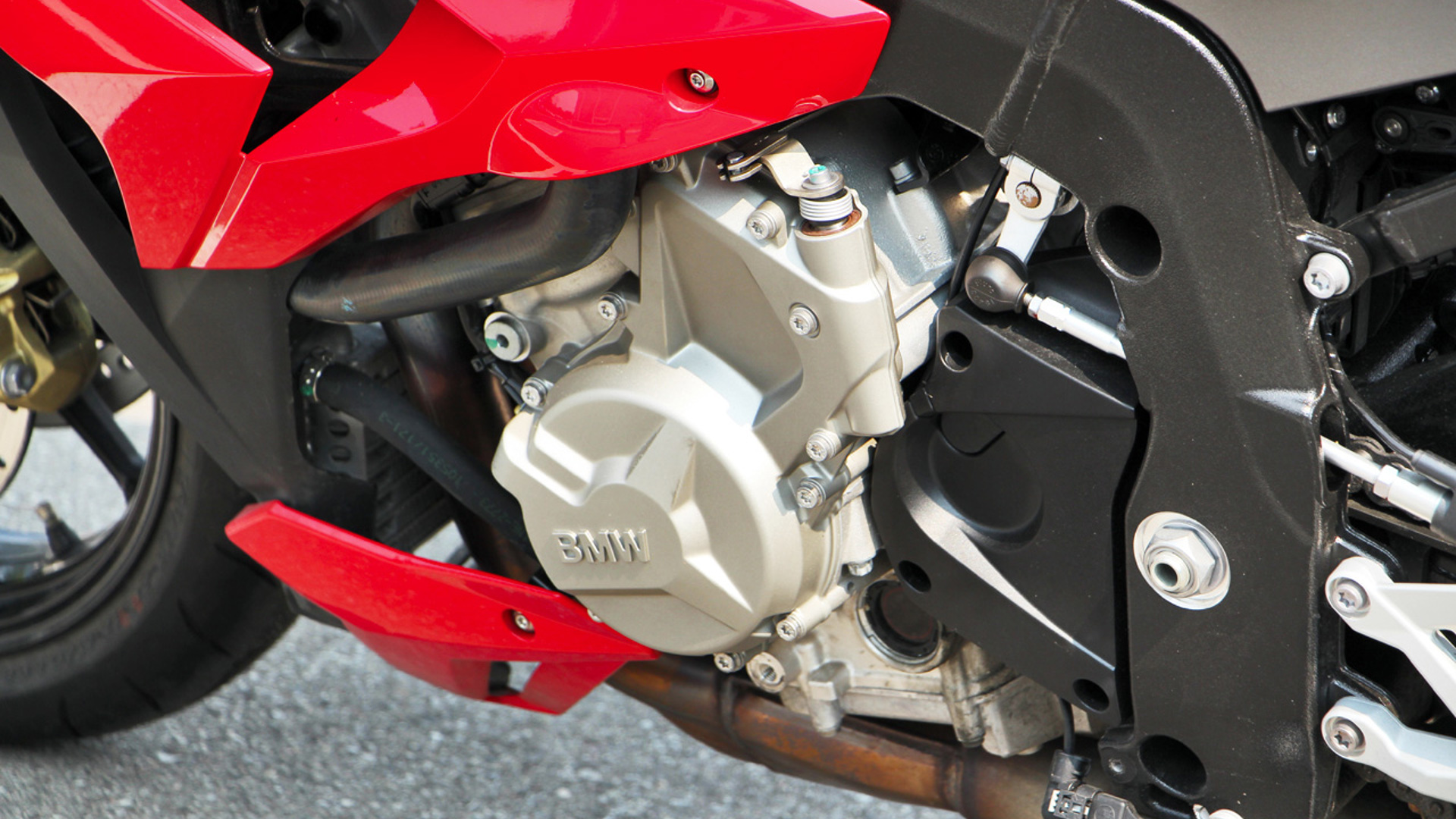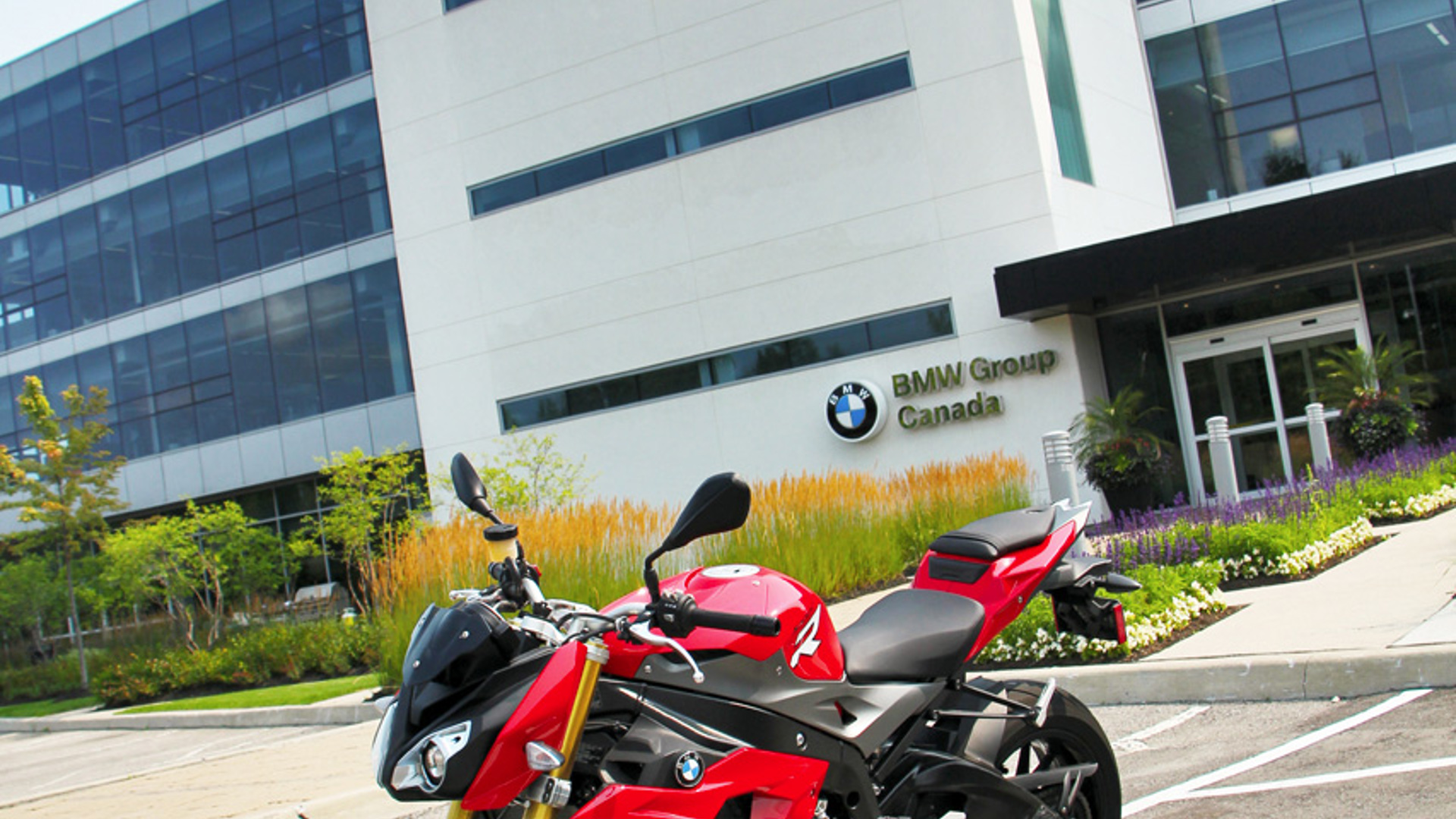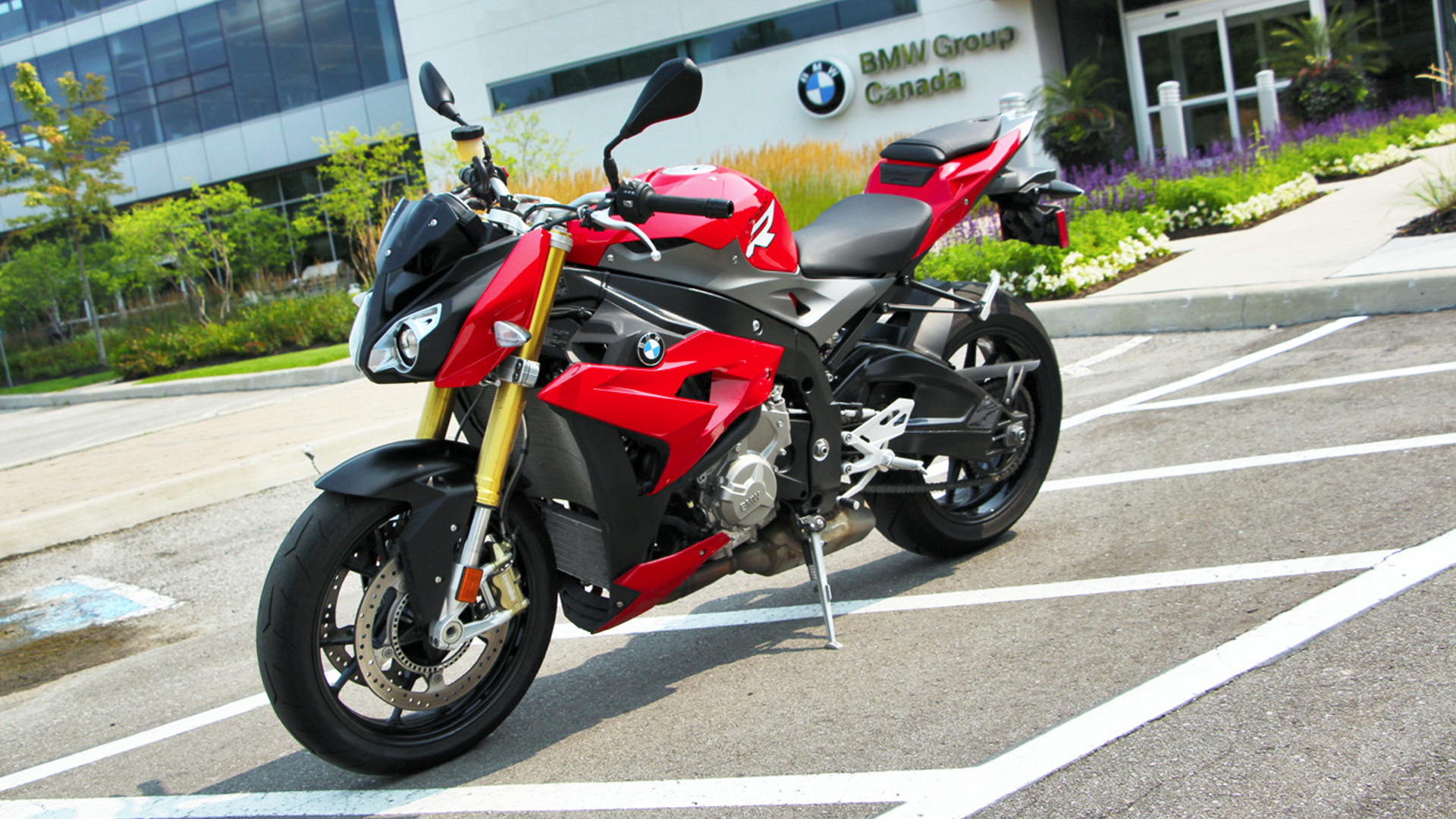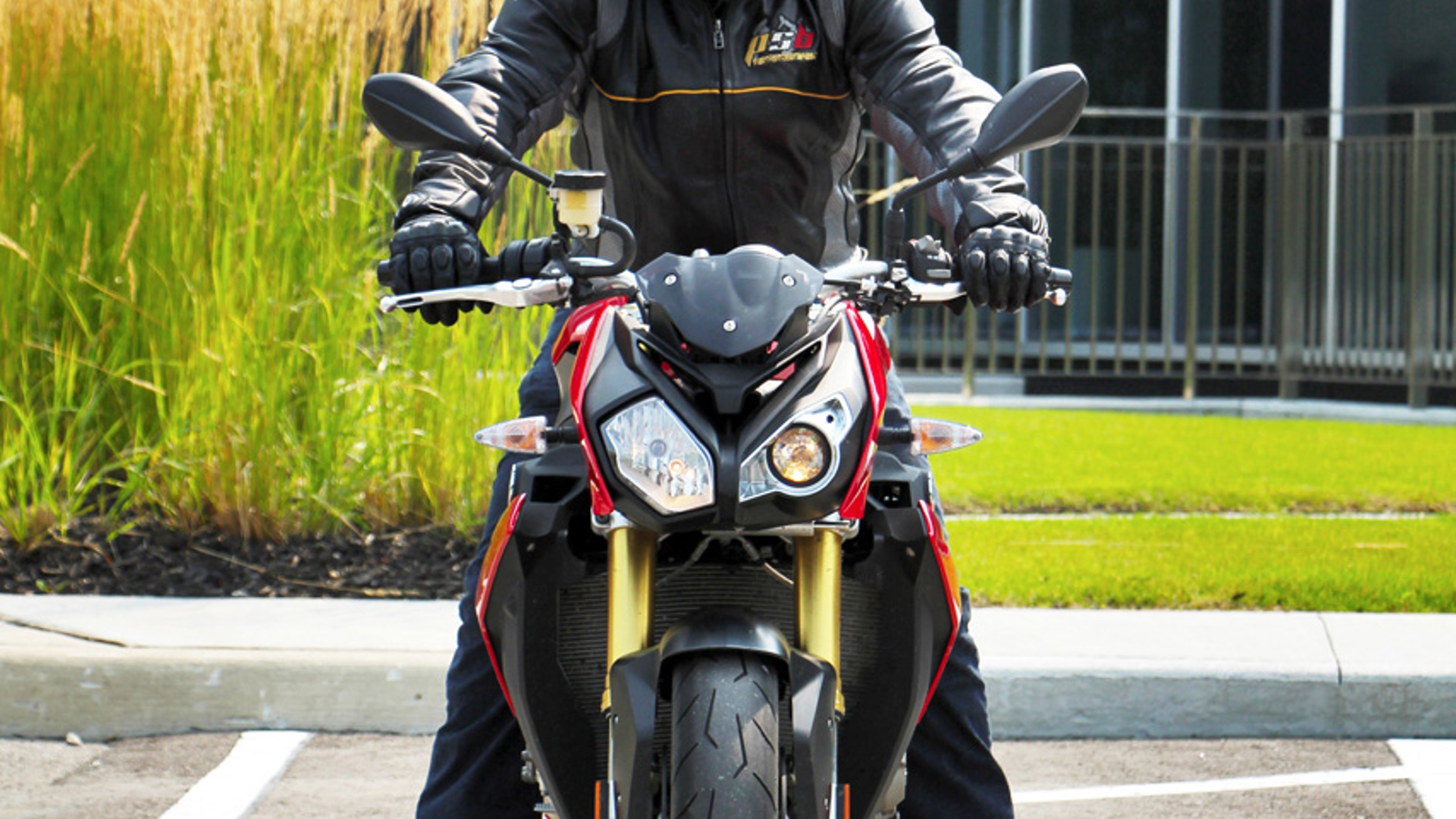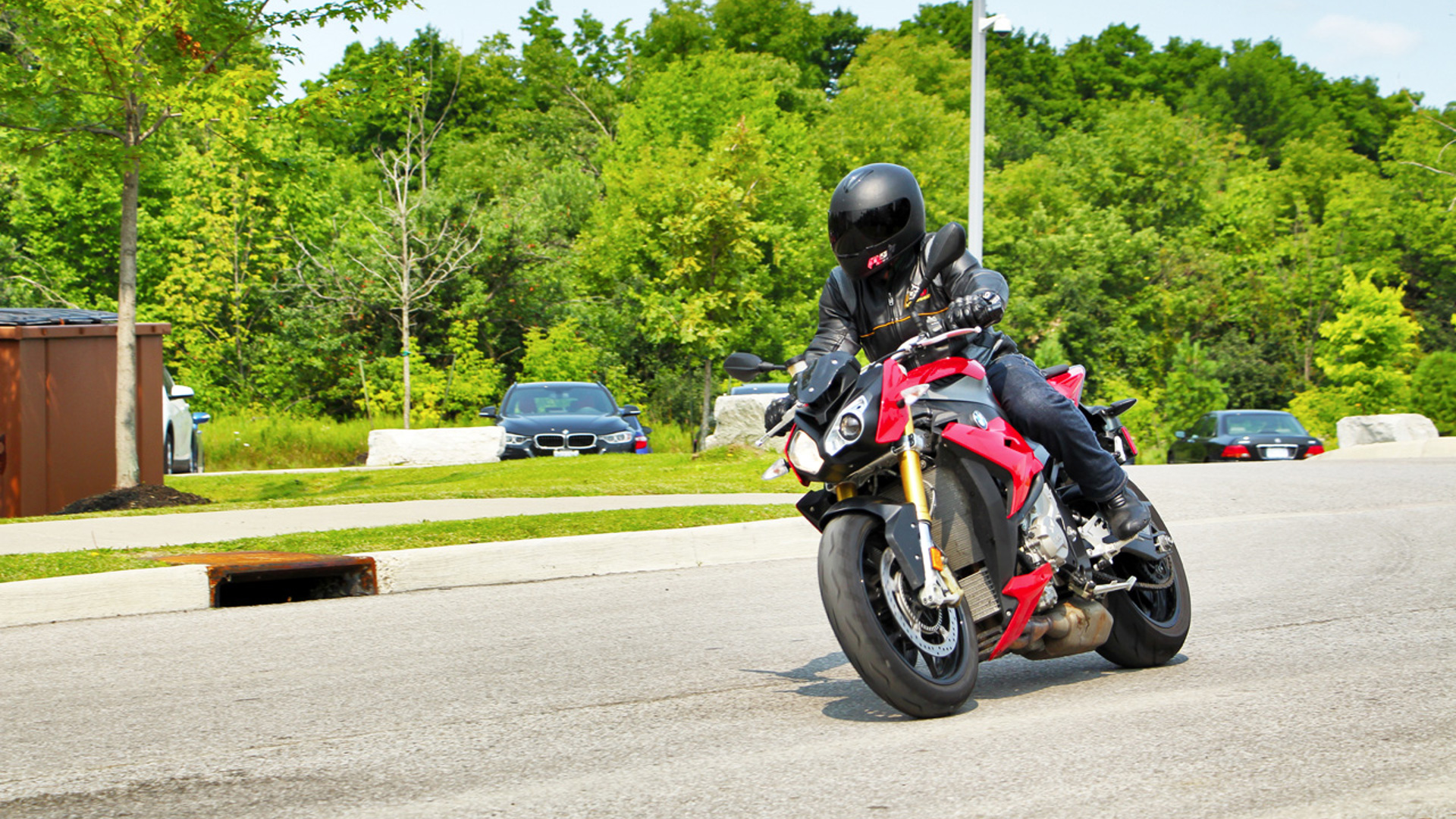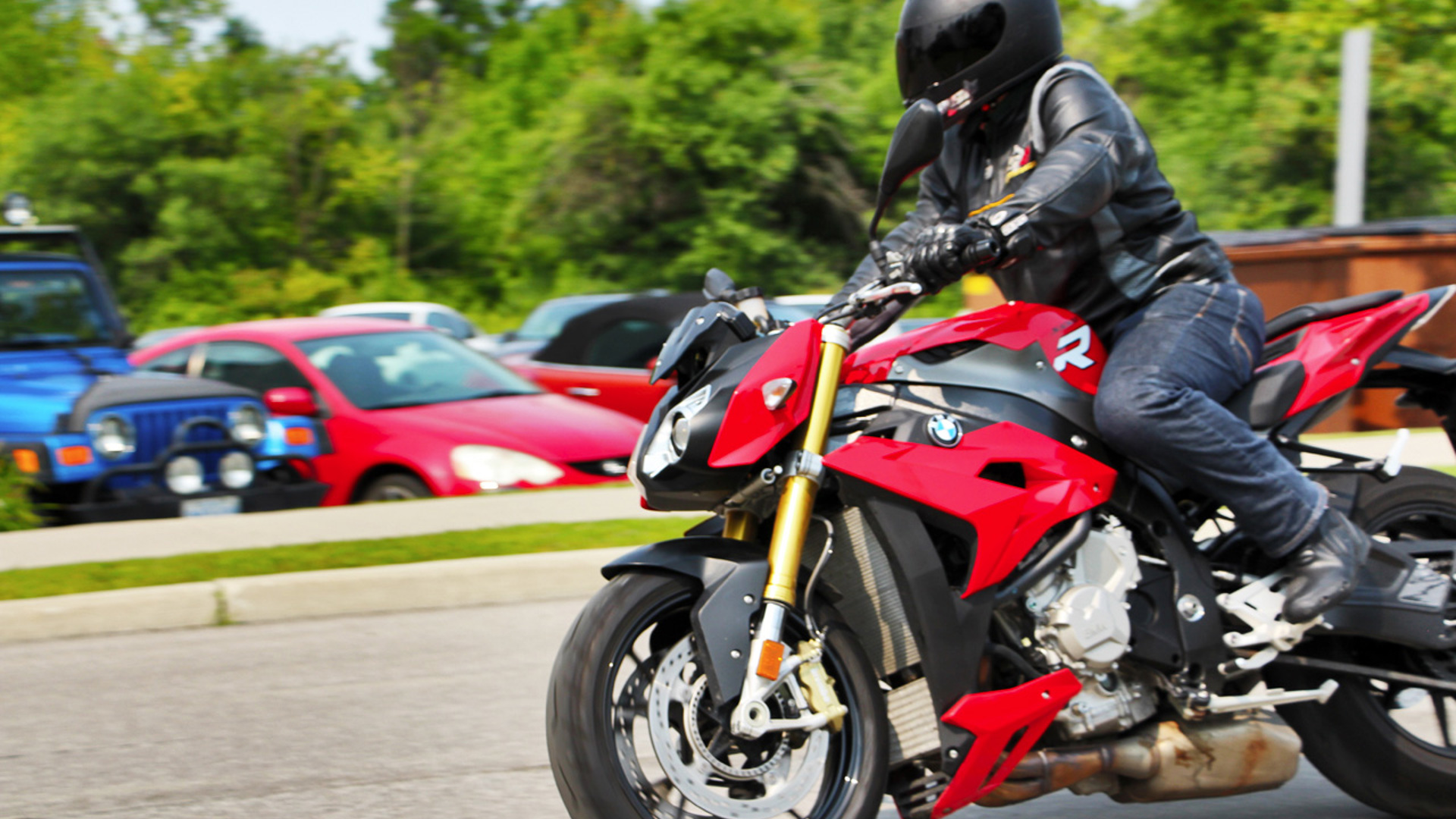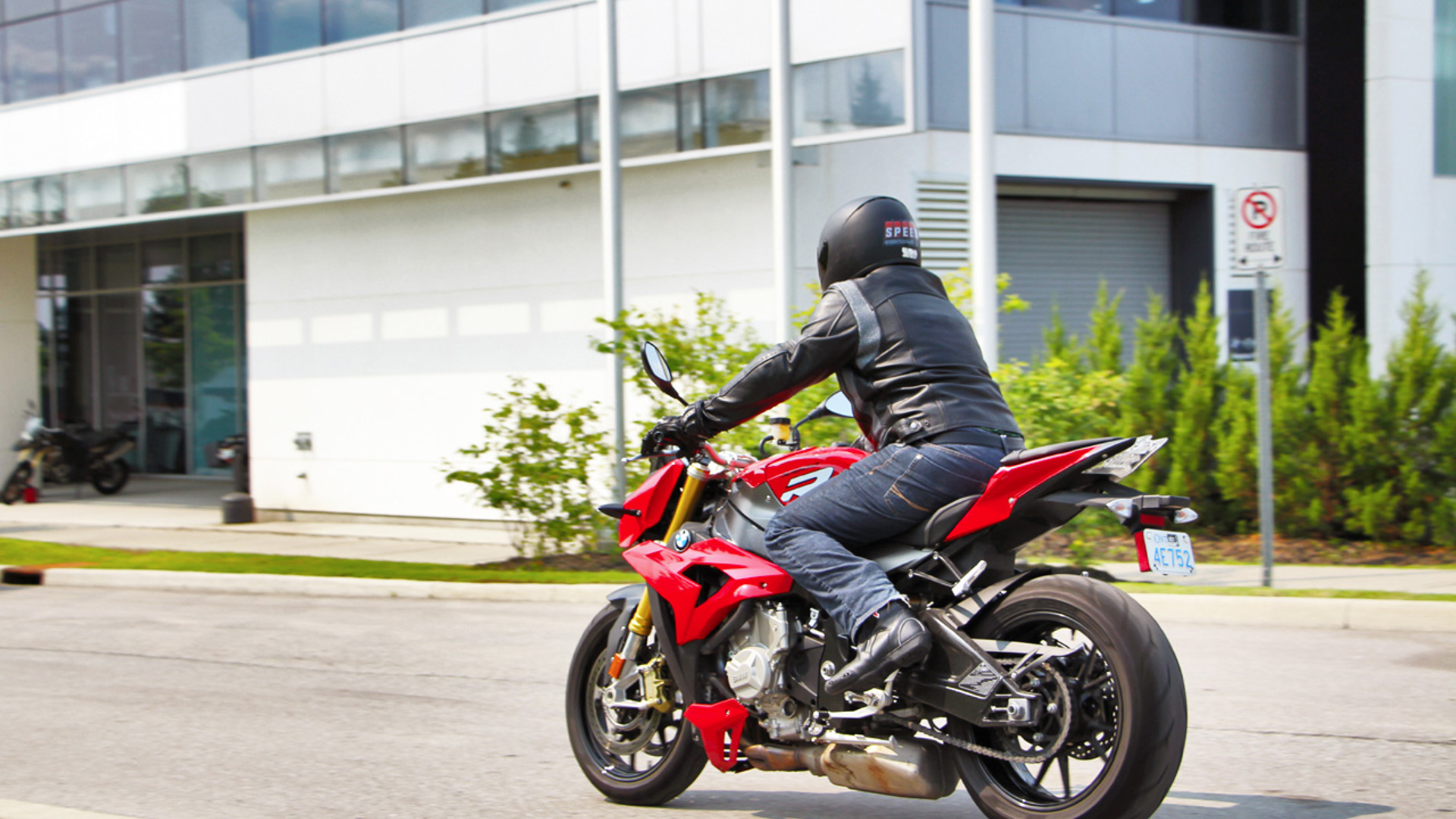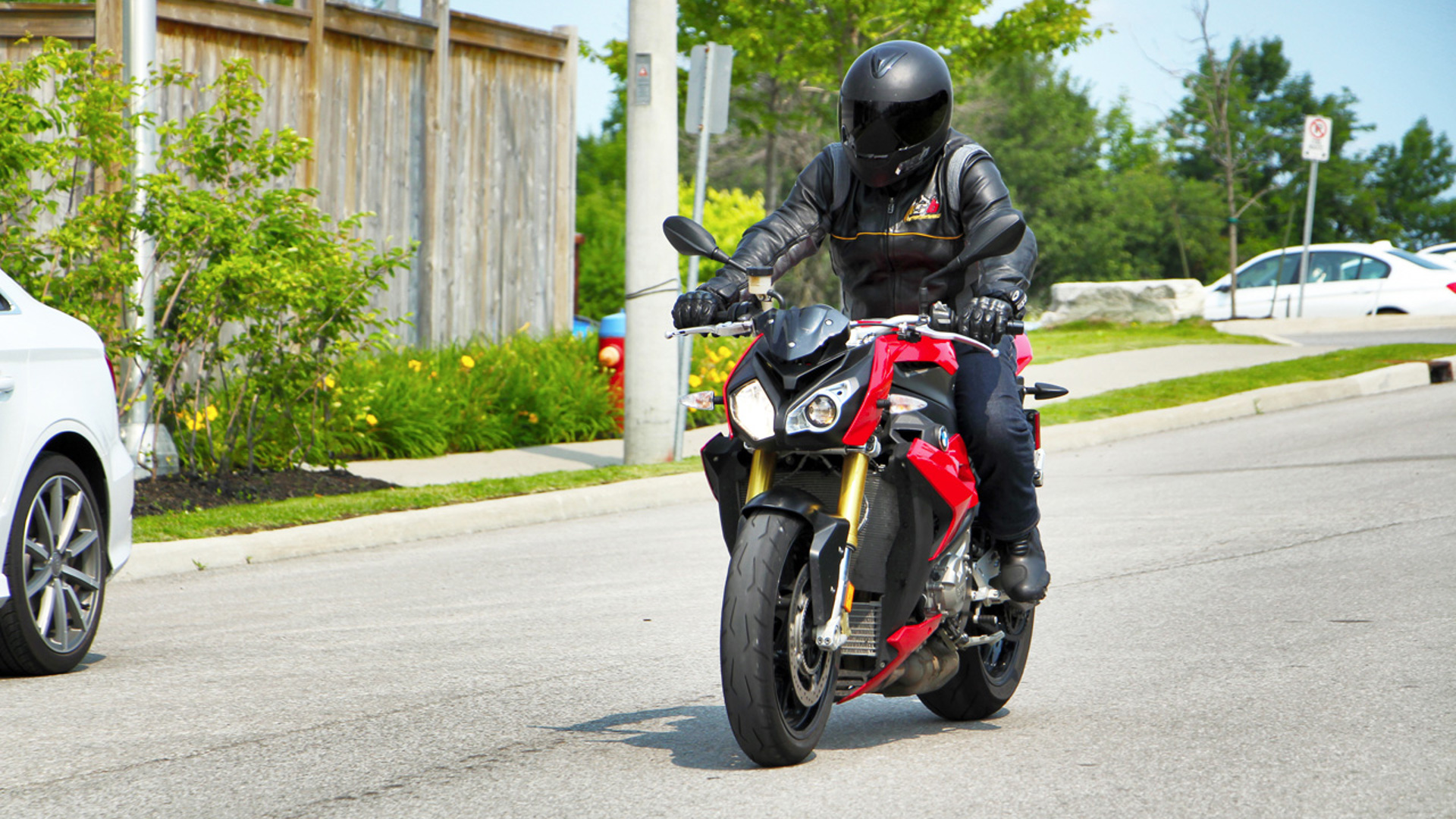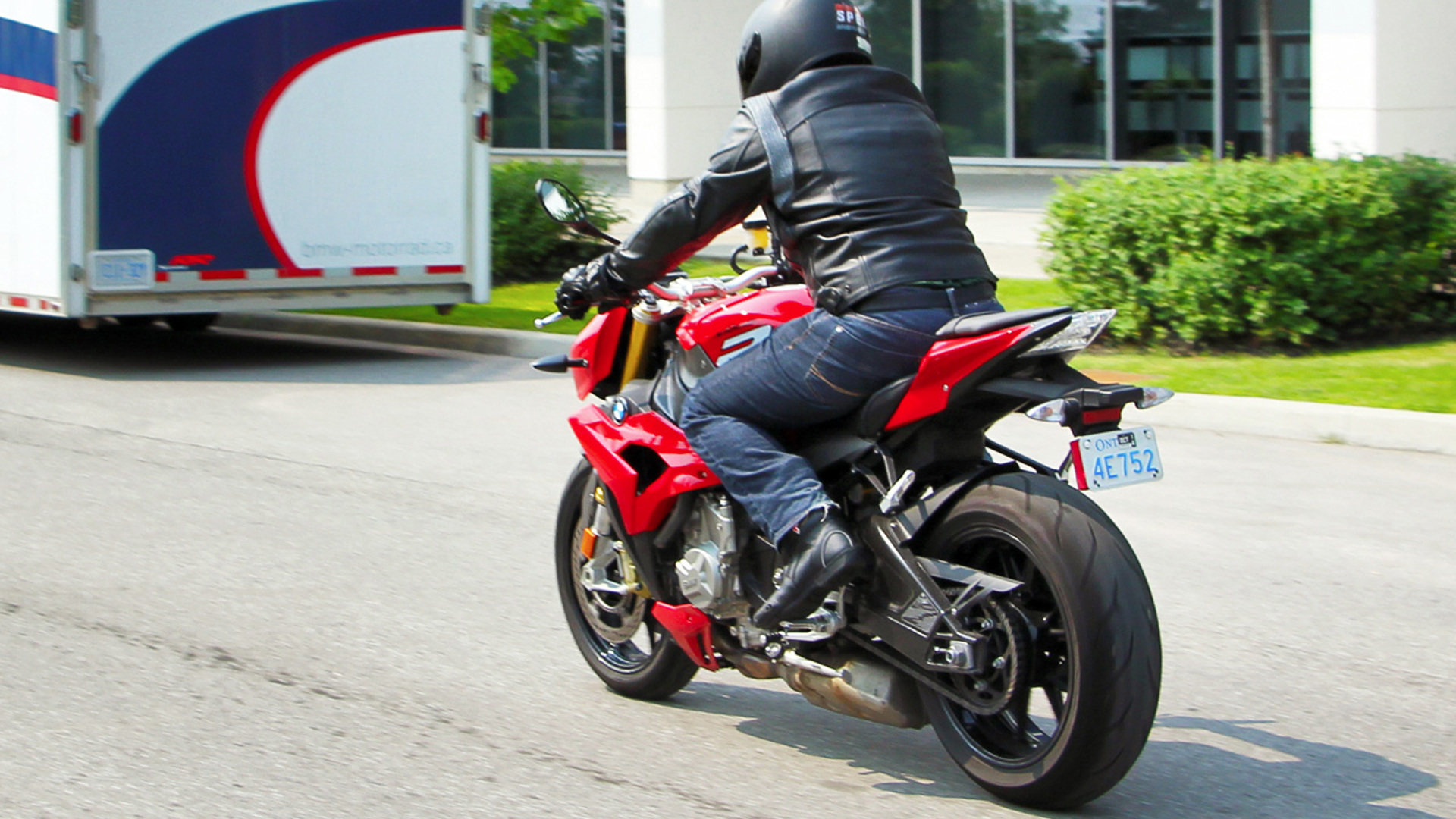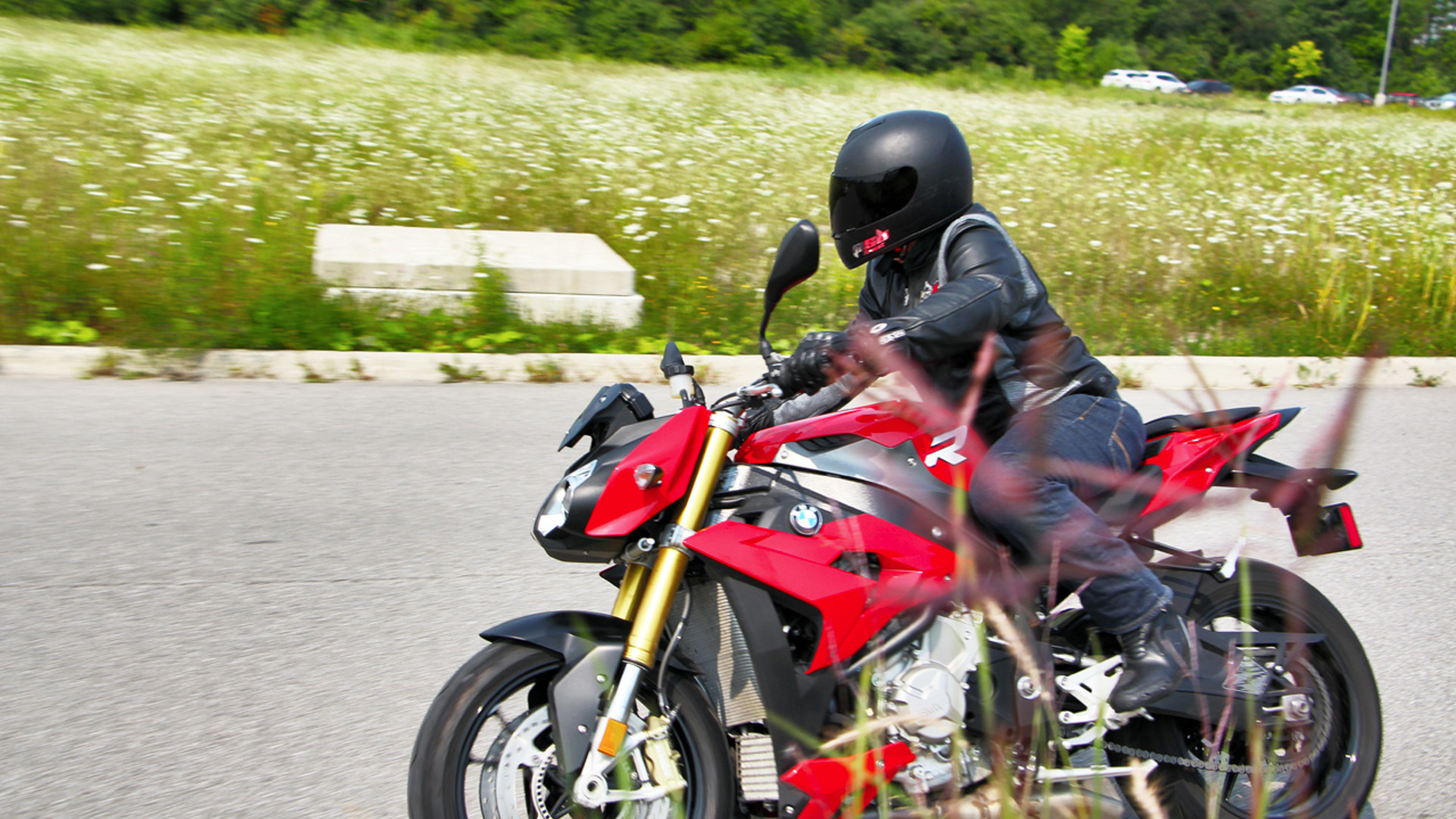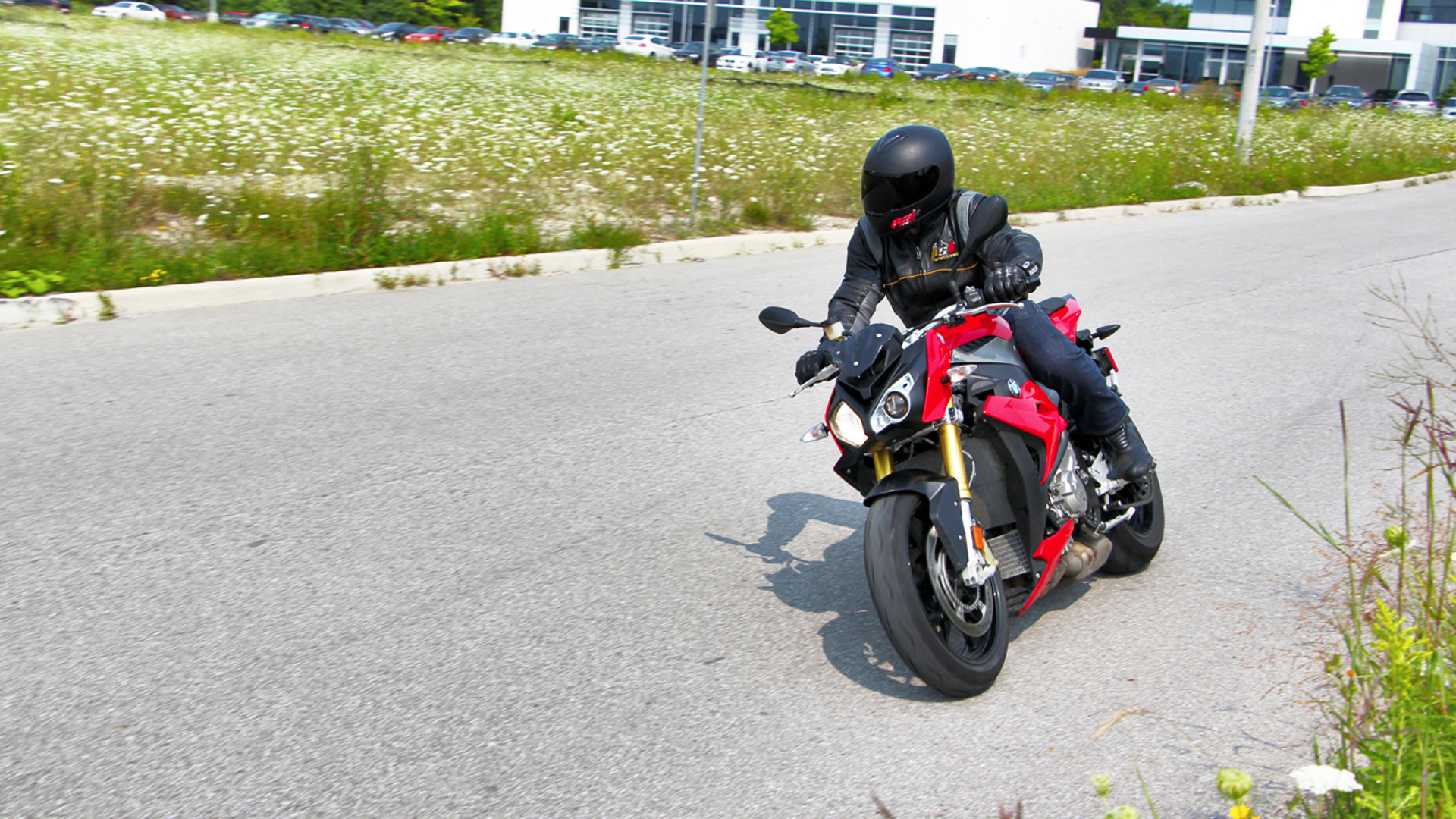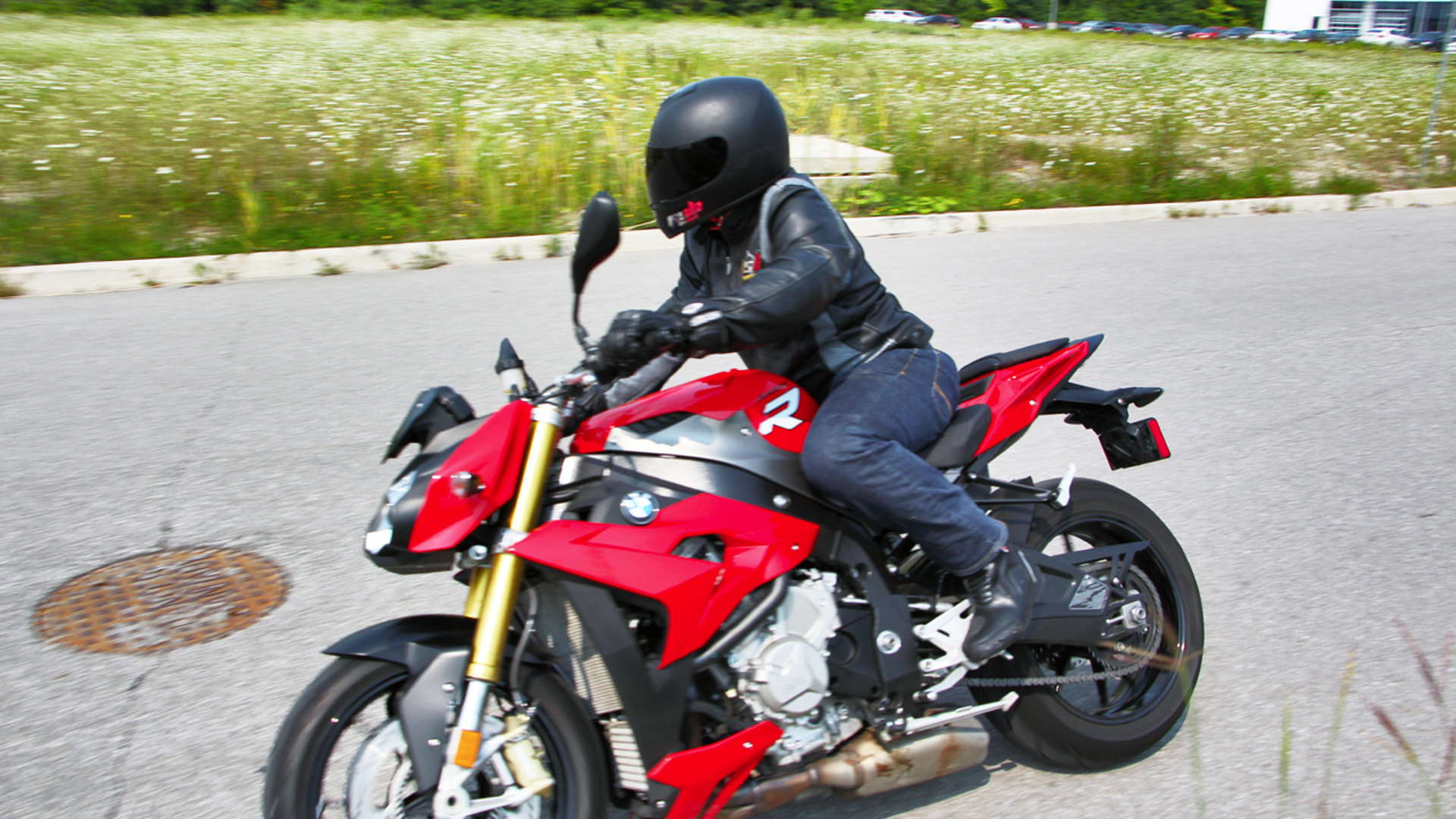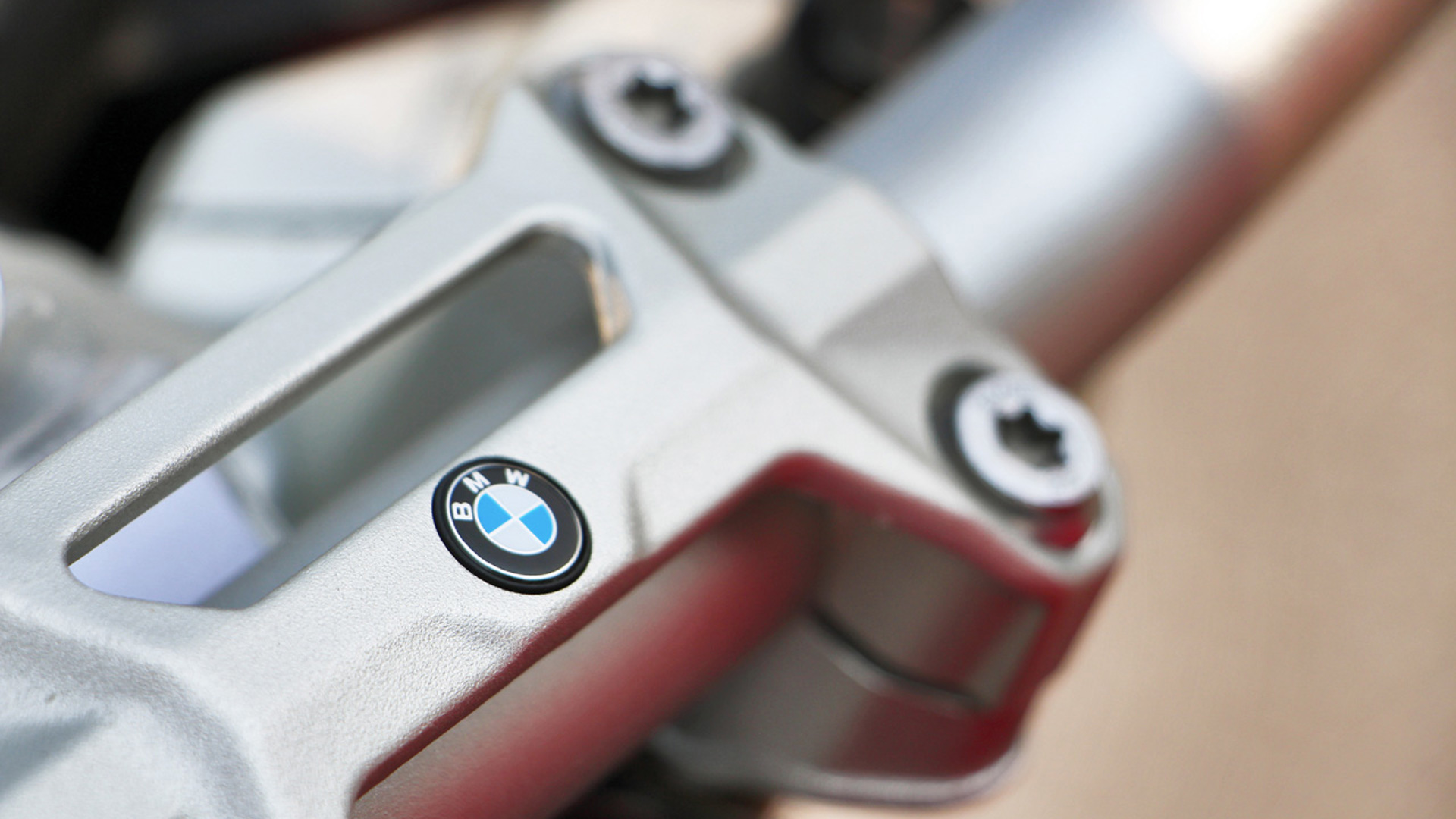Pulling into the Tim Horton’s parking lot was a daunting experience. “There’s a bunch of guys who meet there on Thursday nights,” my friend had said.
“Meet me there, I really want to see this bike.”
There were only about 20 bikes in the parking lot, but as I pulled in all eyes were on me. I was surrounded as soon as the kickstand was down.
“Did you streetfighter this?!” one incredulous gawker asked.
“No, this is factory.”
“Hey is this the new S1000R?”
“Yeah, it is.”
“Is it the same as RR just with no fairings?”
“Well, kind of.”
“Can I ride it?”
“Um, no.”
The S1000R makes a visual impact that sets it apart from other litre-class sport bikes. Based on the acclaimed S1000RR, the R looks for all the world like an RR someone ripped the front fairing off and streetfightered. It isn’t though. This is factory. BMW started with its flagship sports bike, replaced the clips on with a flat bar, and the front fairing with a new headlight surround.
Engine output has been retuned and so peak horsepower drops from 193 hp at 13,000 rpm to 160 hp at 11,000. Torque however, remains the same and actually comes on 500 rpm sooner – the result it a more responsive bike for city riding, with a broad spread of grin-inducing throttle response right where you need it. From idle to 7,500 rpm, BMW says the R will produce about 10 percent more torque than the RR.
The BMW S1000R remains high strung though, cruising at highway speed between 5,000 and 6,000 rpm. The engine is buttery smooth and the engine note is clean, so there isn’t a lot of downside to the high-revving nature of the beast. The throttle-by-wire system does a good job of providing adequate feedback to the rider.
The wheelbase is longer too, with more front rake giving the S1000R a more stable stance with less-rapid turn-in than the RR. The seat height of the R is 6 mm lower, a noticeable drop for those of us blessed with shorter legs.
Other major differences include five kilos of extra weight, 19 mm of width thanks to the flat bars instead of clip-ons and one-stage rebound and damping adjustments for the front and rear suspension (versus high-and-low speed adjustments on the RR).
I expected a lot of wind buffeting but the small bikini fairing seemed to take care of most of the turbulence. You definitely feel the wind aboard this thing, but it’s not unpleasant and doesn’t bounce your upper body around.
If that all sounds like relatively small differences for the average rider – it’s because they are. The riding position is different, but the outright speed and performance is not significantly altered. This then, is a very acceptable compromise for those who find the full-tuck tiresome. If you want to go 95 percent as fast as an RR, but with meaner styling and a more comfortable riding position, this is the bike for you. Sit up, don’t slow down.
The front forks are still 46 mm upside-down units, the front brakes are still 320 mm discs with four-piston calipers and there is still a much-welcomed steering dampener as standard.
BMW hasn’t skimped on the electronic gadgets of this rig either; there is a multi-function display with gear-shift indicator, trip computer and drive-mode selector as standard. In that trim you get two ride modes. With the optional Riding Mode Pro package (part of the $950 Sports Package) you get an extra two selectable engine and drive modes – Dynamic and Dynamic Pro. The four layers all have unique character that alters the way traction control, ABS and engine response is delivered, the final two take advantage of the banking angle sensor to maximize traction exiting corners while the bike is still leaned over. The Sports Package fitted to this tester also included cruise control and Gear Shift Assistant for smooth clutchless upshifts sans power loss.
Because BMW is immensely proud of its technological prowess, this tester also sported the $775 Dynamic Package with Dynamic Damping Control. This system electronically controls the damping speeds of the suspension to improve bump management – especially in corners.
BMW’s suite of electronic aids rarely upstage the rider, instead playing a quiet supporting role in the production of “You Look Awesome, Don’t Screw Up”. The ABS can be turned off if you need to, but I didn’t want to be in the sequel, “Look Like a Skin Crayon, Because You Screwed Up”, so I didn’t.
Even so, the aids have been criticized by some for making the bike too easy to ride – that it makes a lesser rider look better than they are. Oh no! A motorcycle that’s easy to go really fast on! What next? A really attractive girl who’s easy to talk to?
The only time I really went “oh that’s too much” was when I realized the S1000R has cruise control. Cruise control. On a sport bike! But then I realized how easy it is to speed on these bikes, and began using the cruise control to keep myself on the right side of the law – makes sense in that instance.
The truth is, the electronic aids do make the BMW a more forgiving bike that slides, bucks and jumps around less than many of its competitors. You lose that propensity to really back the bike in and accelerate out with the rear lit up. The other truth is, only a few riders are ever capable of that stuff anyway. You still get blistering acceleration – in fact, even more so because the maximum traction is always delivered. You still get the handling and cornering feedback that turns on-ramps into the most exciting part of your entire week, you still get that sense of awe and excitement that spreads to everyone around you.
You also get a bike that makes hardcore enthusiasts mob you in car parks.
